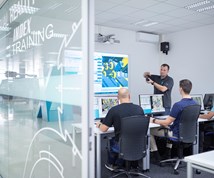Multitasking Encourages Successful Manufacturing
While multitasking allows a shop to perform various manufacturing operations unattended, without moving the part to other machines and refixturing, it also helps shops explore better ways to manufacture. The advantages of multitasking make manufacturing more efficient for any shop.
While multitasking allows a shop to perform various manufacturing operations unattended, without moving the part to other machines and refixturing, it also helps shops explore better ways to manufacture.
Once a shop implements multitasking, the benefits are plentiful and include producing more accurate, higher quality parts at tighter tolerances. Human error is not present in multitasking, and fixturing errors are non-existent as well, since operators do not have to refixture a part coming from another machine. Multitasking saves time, reduces part cost and floor space, increases throughput, offers improved machine monitoring, and more.
Featured Content
All of these advantages of multitasking make manufacturing more efficient for any shop.
To learn more about this process and to read some success stories, read “Multitasking is More Than Doing Two Things at Once,” “Machining Complex Workpieces Complete,” “Multitasking Helps Detroit Shop,” and “Multitasking Machine Produces Unique Medical Part.”
RELATED CONTENT
-
New Line of Swiss-Types for Job Shops Eyeing High-Production Work
Mazak now offers the Syncrex line of Swiss-type CNC lathes — its first — targeting machine shops getting into higher volume production of complex parts.
-
Advancements in Thread Whirling Tooling Technology
Many understand the advantages of thread whirling on a CNC Swiss-type. However, new tooling technology for this thread-machining process can further improve cycle times and reduce cost per part.
-
Making Waves with Lathe Automation
After years of relying on an extensive machining cell for part production, this marine equipment manufacturer has now reduced part handling and improved quality through use of single-setup lathes and automated loading and unloading.






